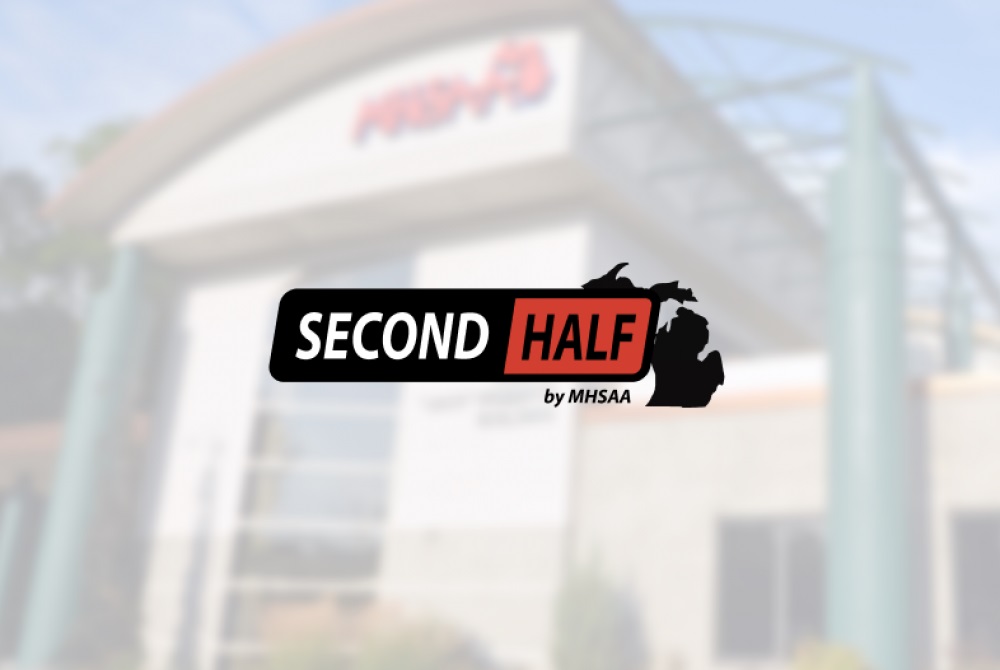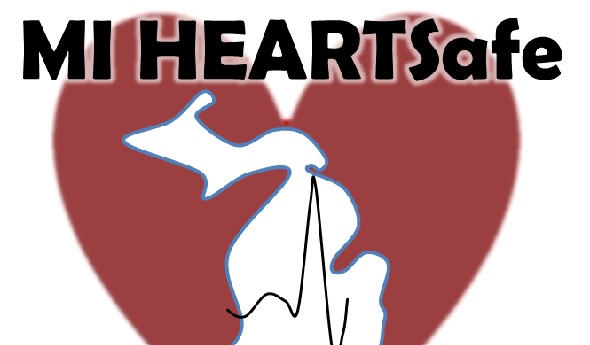
MHSAA Fall Practices to Begin with Common Start Date, Return of Traditional Schedules & Formats
By
Geoff Kimmerly
MHSAA.com senior editor
August 6, 2021
Teams participating in all nine sports for which the Michigan High School Athletic Association sponsors postseason tournaments – featuring more than 100,000 student athletes statewide – will be allowed to begin practice Monday, Aug. 9, and with a return to traditional schedules and MHSAA Tournament formats after COVID-19 resulted in various adjustments for the Fall 2020 season.
Postseason competition in cross country, football, golf, tennis and swimming & diving will revert to their customary formats this season, with all fall sports scheduled based on their traditional calendars other than beginning practice with a common start date for the first time. At the time of this release, there are no COVID-19-related state-ordered restrictions regarding school sports, for either athletes or spectators, from either the MHSAA or the Michigan Department of Health & Human Services (MDHHS). County health departments and local school districts may institute restrictions for venues in their areas, and teams traveling to those schools and venues must follow local mandates.
For most of the MHSAA’s modern history, football teams had begun practice Monday of the first week of the preseason, followed by the rest of fall teams two days later. A 2019 rule change allowed a few more sports to begin on Monday, dependent on their Finals dates that fall. The common start date for all fall practices this season and annually moving forward was approved by the MHSAA Representative Council at its Spring Meeting in May and allows all teams to begin the 16th Monday before Thanksgiving.
Football teams still must have 12 days of preseason practice at all levels before their first game, over a period of 16 calendar days before the first kickoff, with the first varsity games this fall scheduled for Aug. 26 and the weekend of Aug. 27-28. Competition this fall may begin Aug. 16 for golf and tennis teams and Aug. 18 in cross country, soccer, volleyball and swimming & diving.
One of the most anticipated sport-related changes for Fall 2021 is the full implementation of the “enhanced strength-of-schedule” format for selecting the 256-team field for the 11-Player Football Playoffs. The new format eliminates automatic qualification based on win total and bases it solely on playoff-point average, which also is determined differently in that it now awards teams more for playing tougher schedules. (Click for a more detailed comparison of the previous and new formats.)
The new playoff-point formula was used in 2020 to seed teams at the District and Regional levels, but its use for qualification was put on hold as COVID-19 caused a one-season switch in playoff format that allowed all teams to qualify.
Additional rules changes in cross country, football, golf and tennis will be most noticeable this fall:
• Cross Country will provide an opportunity for more individual Finals qualifiers this season, as a minimum of seven individual qualifiers will advance from each Regional race. Previously, runners on teams that did not qualify as a whole could still advance to the Finals if they finished among the top 15 individuals at a Regional – but at some Regionals runners from the team qualifiers filled the great majority of those top 15 finishes. The seven individual qualifiers from each Regional this season will be the first seven finishers from teams that do not qualify as a whole, even if they finish outside of the top 15.
• Another football change continues the focus on minimizing injury risk, addressing blocking below the waist in the free-blocking zone (the rectangular area extending laterally four yards to either side of the snap and three behind the line of scrimmage). The new rule states a below-the-waist block in the free-blocking zone must occur as an immediate, initial action following the snap, instead of the previous rule which allowed an offensive lineman to delay and block below the waist as long as the ball was still in the zone.
• For Lower Peninsula girls golf, teams will be required to use the scoring platform iWanamaker also for the regular season, just as they were required to do so for MHSAA Tournament competition during the 2020-21 school year. The scoring platform is made available through the MHSAA Golf app, which was created and is operated by iWanamaker and allows golfers, coaches and fans to chart scoring in real time.
• In tennis, if a seeded player withdraws on the day of an MHSAA Regional or Final, all seeded players below that withdrawing player (including the provisional seed in that flight) will move up and be placed on the proper line for that new seed. (Non-seeded players drawn into the bracket will not be moved.)
The 2021 Fall campaign culminates with postseason tournaments beginning with the Upper Peninsula Girls Tennis Finals during the final week of September and wraps up with the 11-Player Football Finals on Nov. 26 and 27. Here is a complete list of fall tournament dates:
Cross Country
U.P. Finals – Oct. 23
L.P. Regionals – Oct. 29 or 30
L.P. Finals – Nov. 6
11-Player Football
Selection Sunday – Oct. 24
Pre-Districts – Oct. 29 or 30
District Finals – Nov. 5 or 6
Regional Finals – Nov. 12 or 13
Semifinals – Nov. 20
Finals – Nov. 26-27
8-Player Football
Selection Sunday – Oct. 24
Regional Semifinals – Oct. 29 or 30
Regional Finals – Nov. 5 or 6
Semifinals – Nov. 13
Finals – Nov. 19 or 20
L.P. Girls Golf
Regionals – Oct. 4, 5, 6, 7, 8, or 9
Finals – Oct. 15-16
Soccer
Boys L.P. Districts – Oct. 13-23
Boys L.P. Regionals – Oct. 26-30
Boys L.P. Semifinals – Nov. 3 Boys
L.P. Finals – Nov. 6
L.P. Girls Swimming & Diving
Diving Regionals – Nov. 11
Swimming/Diving Finals – Nov. 19-20
Tennis
U.P. Girls Finals – Sept. 29, 30, Oct. 1, or 2
L.P. Boys Regionals – Oct. 6, 7, 8 or 9
L.P. Finals – Oct. 14-16
Girls Volleyball
Districts – Nov. 1-6
Regionals – Nov. 9 &11
Quarterfinals – Nov. 16
Semifinals – Nov. 18-19
Finals – Nov. 20
The MHSAA is a private, not-for-profit corporation of voluntary membership by more than 1,500 public and private senior high schools and junior high/middle schools which exists to develop common rules for athletic eligibility and competition. No government funds or tax dollars support the MHSAA, which was the first such association nationally to not accept membership dues or tournament entry fees from schools. Member schools which enforce these rules are permitted to participate in MHSAA tournaments, which attract more than 1.4 million spectators each year.

122 Schools Recognized as HEARTSafe
May 15, 2015
The Michigan departments of Health and Human Services (MDHHS), and Education (MDE); American Heart Association (AHA); Michigan High School Athletic Association (MHSAA); and Michigan Alliance for Prevention of Sudden Cardiac Death of the Young (MAP-SCDY) have awarded 122 schools in Michigan with the MI HEARTSafe School designation which recognizes schools that are prepared to respond to cardiac emergencies.
“Sudden cardiac death claims the lives of more than 300 Michigan children and young adults between the ages of one and 39 years of age each year,” said Dr. Eden Wells, chief medical executive of MDHHS. “Implementation of CPR and an automated external defibrillator (AED) within 3-5 minutes is crucial for increasing the chance of survival. Cardiac arrest is often unexpected and frightening, and I’m pleased to see so many of our schools taking preventative measures to address this health issue.”
Between 1999 and 2009 in Michigan, there were 3,134 young individuals between 1 and 39 years of age who died of sudden cardiac death. Of those, 246 were between 5 and 19 years of age. In its second year, the MI HEARTSafe Schools designation is Michigan’s commitment to reducing the number of sudden cardiac death in our youth. Last year was the first year of the program, and 40 schools were designated in Michigan.
“MDE is proud to support MI HEARTSafe schools,” said State Superintendent Mike Flanagan. “Ensuring schools are prepared for sudden cardiac emergencies through planning, training, and AEDs is an important part of having safer learning environments for students, staff, and the community.”
Public Act 12 of 2014 requires all schools (grades kindergarten to 12) to have a cardiac emergency response plan in place. This designation recognizes 122 schools that have taken steps above and beyond to prepare to respond in the event of a cardiac emergency, and is awarded for a period of three years. Click for the list of designated schools.
“The Michigan High School Athletic Association is proud to partner with the state of Michigan to promote the MI HEARTSafe Schools program,” said Jack Roberts, executive director of the Michigan High School Athletic Association. “It’s important we all do our part to help schools prepare for unexpected emergencies to keep children in our communities safe.”
In order for a school to receive a MI HEARTSafe designation, it must perform at least one cardiac emergency response drill per year, have a written medical emergency response plan and team, have current CPR/AED certification of at least 10 percent of staff, have accessible, properly maintained and inspected AEDs with signs identifying their location and ensure pre-participation sports screening of all student athletes using the current physical and history form endorsed by the Michigan High School Athletic Association.
Schools that meet all of the requirements will be able to apply for the MI HEARTSafe School designation each year. Click for more information about the MI HEARTSafe Schools program.

